
Succulents with Fibonacci Spirals
You'll enjoy succulents even more when you see how many have Fibonacci spirals. I show gorgeous examples (all ID'd) in my latest video and in the Gallery below.

Mammillaria eichlamii
What's a Fibonacci spiral?
It’s a pattern often seen in the natural world. You’ve likely seen Fibonacci spirals in the centers of sunflowers, pine cones, artichokes, and even photos of hurricanes and galaxies.

Sunflowers are famous for their central Fibonacci spirals
In botany, spiral phyllotaxis is when leaves along a plant’s stem are arranged in the numerical sequence first described by Leonardo Fibonacci, a 12th-century Italian mathematician.
It’s actually pretty simple: Each number in the sequence is the sum of the two numbers that preceded it.
So: 1 and 1 are 2, 1 and 2 are 3, 2 and 3 are 5, 3 and 5 are 8, 5 and 8 are 13, 8 and 13 are 21 and so on. One way to explain it is to draw on graph paper squares each with sides that are successive Fibonacci numbers.

The Fibonacci sequence is one of the most famous formulas in mathematics. The blue line through each square’s opposite corners reveals the spiral. Illustration: Romain/Wikipedia
This also illustrates what’s known in art and architecture as the Golden Ratio.
The Golden Ratio
Artists and architects routinely consider the Golden Ratio in their designs. You may be using it yourself without knowing you’re doing so, when composing or cropping a photo; it’s called the Rule of Thirds.
The idea is you can make a photo more pleasing to the eye by placing its subject in the left or right third of an image, leaving the other two thirds more open.

Aeonium 'Starburst' photo illustrates the plant's Fibonacci spiral as well as the rule of thirds.
Massachusetts graphic designer Jonathan Cleveland says of the Golden Ratio, “Overall, it’s an interesting way to look at great design through a mathematical lens.”
aesthetic Yet USEFUL
Why do plants have spiral leaf arrangements? What purpose does it serve? It’s certainly practical for succulents. A spiral of leaves enables rain to funnel down to roots, and keeps upper leaves from shading lower ones.
However what’s not so obvious is why Fibonacci spirals strike humans as pleasing to look and fascinating to discover.

This eye-catching display of echeverias is by HGTV host and landscape designer Mike Pyle.
It comes down to aesthetics, which is subjective. Perhaps you, like me, gravitate to the unadorned simplicity of spirals. Take echeverias: When I ask people if they like those with bumpy leaves, some do, some don’t.
Personally, I like the weirdness and irregular variations of the bumps, but I also prefer echeverias with tight overlapping leaves. No wonder Echeveria ‘Raindrops’ is so popular. It offers the best of both, having bumps on leaves arranged in a tight pattern.

Echeveria 'Raindrops'
Agaves
And who doesn't like agaves with leaves that have a crisp geometry, like the Queen Victoria agave below?

Agave victoriae-reginae
However, I wonder if you feel the same as I do about Agave ‘Cornelius’...

Agave 'Cornelius'
'Cornelius' has yellow-and-green stripes and leaves with wavy edges. It’s colorful, odd and interesting, but those marginal ripples hide the very reason most of us like agaves: their symmetrical leaf arrangements.

Agave americana core
Above: Agave americana has leaves arranged in a Fibonacci sequence. This one bloomed and had to be removed (not sure why I'm smiling). Do you see why the core of an agave is called a piña in Mexico? It means pineapple, which also exhibits the sequence. (Photo from my site's tequila post.)
Aloes

Aloe polyphylla (Spiral aloe)
Perhaps the most famous succulent for its Fibonacci sequence is aptly named spiral aloe (Aloe polyphylla). It's tricky to grow, making it the Holy Grail of succulents. If you can grow spiral aloes, you can grow anything.
Other aloes have leaves that follow the Fibonacci sequence, but the longer and narrower the leaf, the less noticeable the spiral.

Aloe flower buds also form spirals. This is Aloe maculata.
Succulents with sunflower centers

No two medusa euphorbias are exactly alike, and seldom do you find one with a perfectly symmetrical center.
Medusa euphorbias are known for craggy, snakelike stems that radiate from a spiral that resembles the center of a sunflower.
The spines of spherical cacti follow the Fibonacci sequence. When the pattern is prominent, I prefer the plants out of bloom. The flowers, at least for me, take attention away from the pattern.

Mammillaria spinosissima
Once you realize that plants in your garden and potted collection exhibit Fibonacci spirals, you’ll start seeing them everywhere.
But not 4!
Four is not a Fibonacci number. Very few flowers have four petals. (Don't take my word for it; see if you run across any.) Subliminally, we expect flowers to have 5, 8, 13 or more overlapping petals, and when they don’t, something's not quite right.
So if you draw a flower from imagination, don’t give it four petals; it’ll look more realistic with five.
Do you have a favorite Fibonacci succulent, one you long to have, or a story about one to share? Tell us in the Comments below!
Gallery of Succulents with Fibonacci Spirals
More INFO on this site
How Cactus Snowflakes Seduced Me
Remarkably, the spination of certain cacti suggests snowflakes, something I first noticed years ago at a succulent specialty nursery. I was there to photograph aloes in bloom, but I’d come too early in the season. I thought of leaving, and I’m so glad I didn’t! That afternoon forever changed the way I see certain succulent…
Meet Snake-Leaved Medusa Succulents
This essential info on medusoid euphorbias (snake-leaved plants) is from “Spiny Succulents: Euphorbias, cacti, and other sculptural succulents,” by renowned nurseryman Jeff Moore, owner of Solana Succulents near San Diego. I highly recommend his brand new book.
Euphorbia or Cactus? How to Tell
How can you tell a spiny euphorbia from a cactus? Observe key characteristics: the type of spines, flowers and leaves (or lack thereof). As I compiled my site’s new Euphorbia page, I happily acquired the ability to tell at a glance which is which. Sure, you can scratch a plant, and if it drips milky sap, it’s


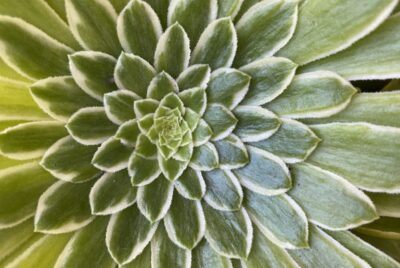
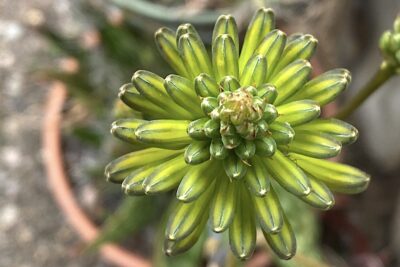











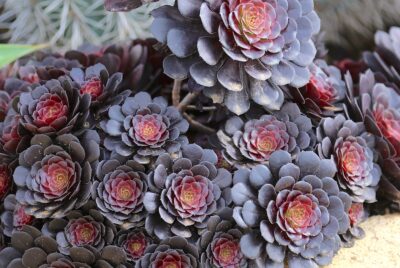






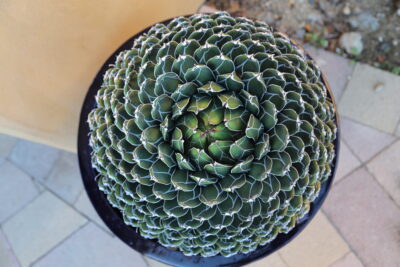



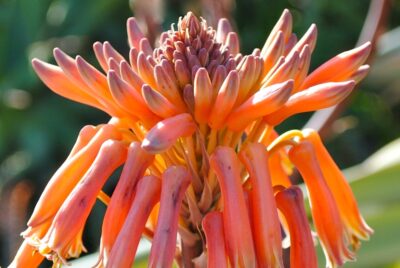








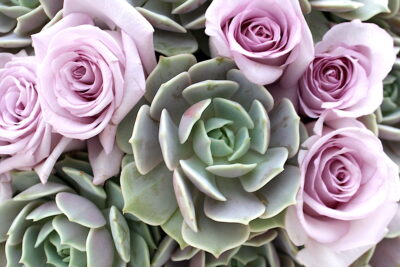












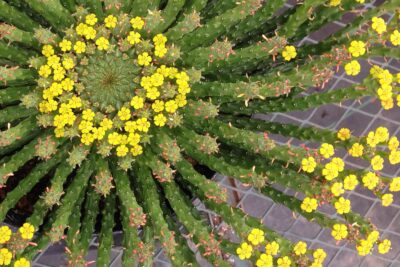
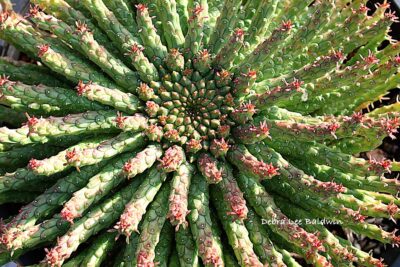
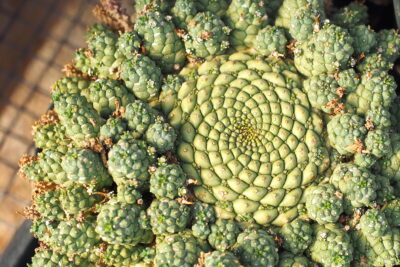





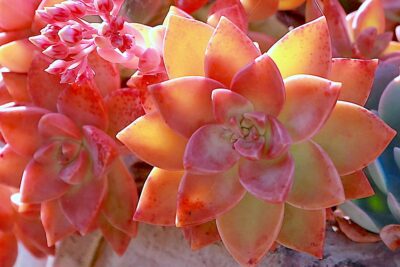














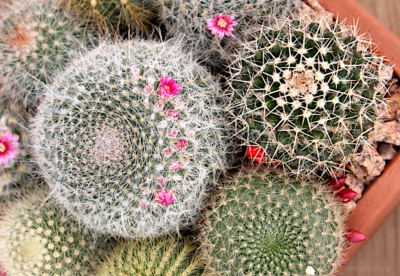
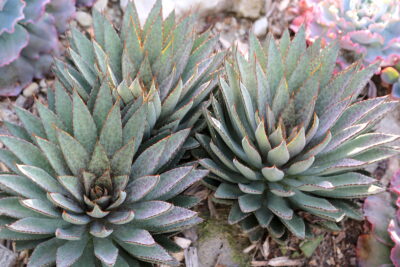










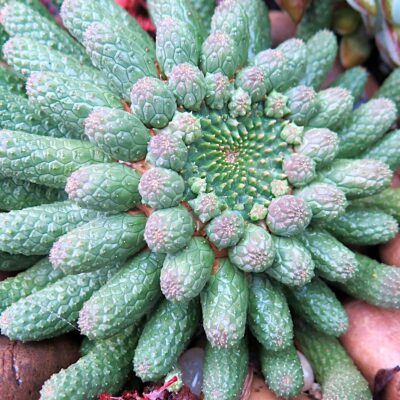
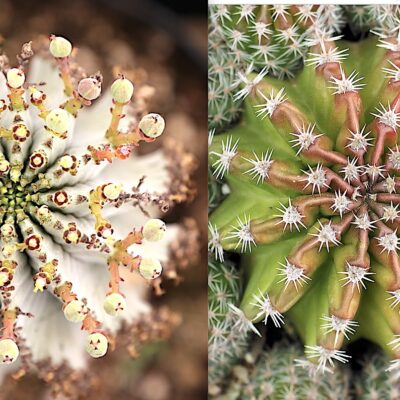
Debra, Thanks so much for showing us such unusual succulents. Wow! isn’t creation amazing! I love that growers find ways to cultivate such beauties and thank you for sharing the pictures with us. I love succulents and the rare’er the better. I enjoy reading your newsletter every week I learn something new from it.
Thank you, Sylvia. Much appreciated!
As always, another great informative video.
Gosh, Jerry, thanks so much for taking the time to comment! Much appreciated!
Hi, I am a grade 11 student in Ontario, Canada. I have visited your site many times and have found a lot of very helpful information, specifically related to echeverias. This is because I am conducting a math exploration about the changes of the spiral pattern of two of the same types of echeveria as they grow in two different locations. I would like to gain your insight about this topic as my question is very specific. Do you think the changes in the spiral pattern of either echeveria will be affected if one is put in partial sunlight and the other in direct sunlight? It would be great to get more information for my exploration.
Hi Kriti — Echeverias are highly sensitive to light, and in low light will stretch (elongate, or in horticultural terms, etiolate) in the direction of greatest light. Etiolation compromises a rosette’s symmetry, making it lopsided. However, as to “changes in the spiral patterns” I’d have to say no…the patterns would be the same…that is, if you’re referring to the way the leaves emerge from the plant’s central core. That wouldn’t be affected by light. I hope this helps!
Yes, it did help! The plant that was placed in partial sunlight did elongate towards the window and became lopsided, however, as you said, it did not affect the central part of the spiral. Thank you so much for your help!
This is so cool Debra 😎
Thank you, Regina!